This document provides a summary of key Python concepts including data types, operators, functions, conditionals, loops, lists, and modules. It covers basic syntax and usage for common tasks like printing, taking user input, performing calculations, defining variables, and more. The cheat sheet acts as a reference guide for anyone looking to learn Python or needing a refresher on essential language basics.


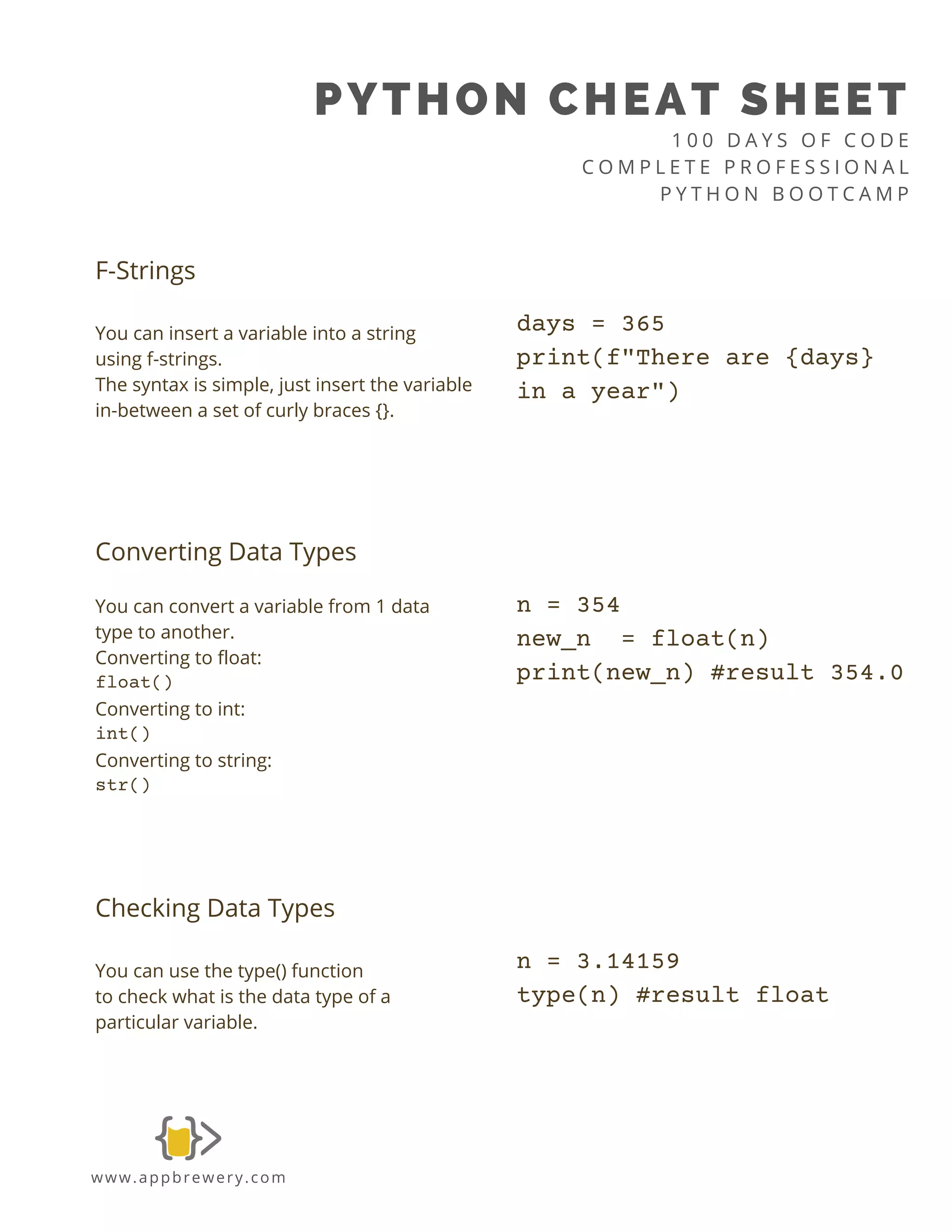


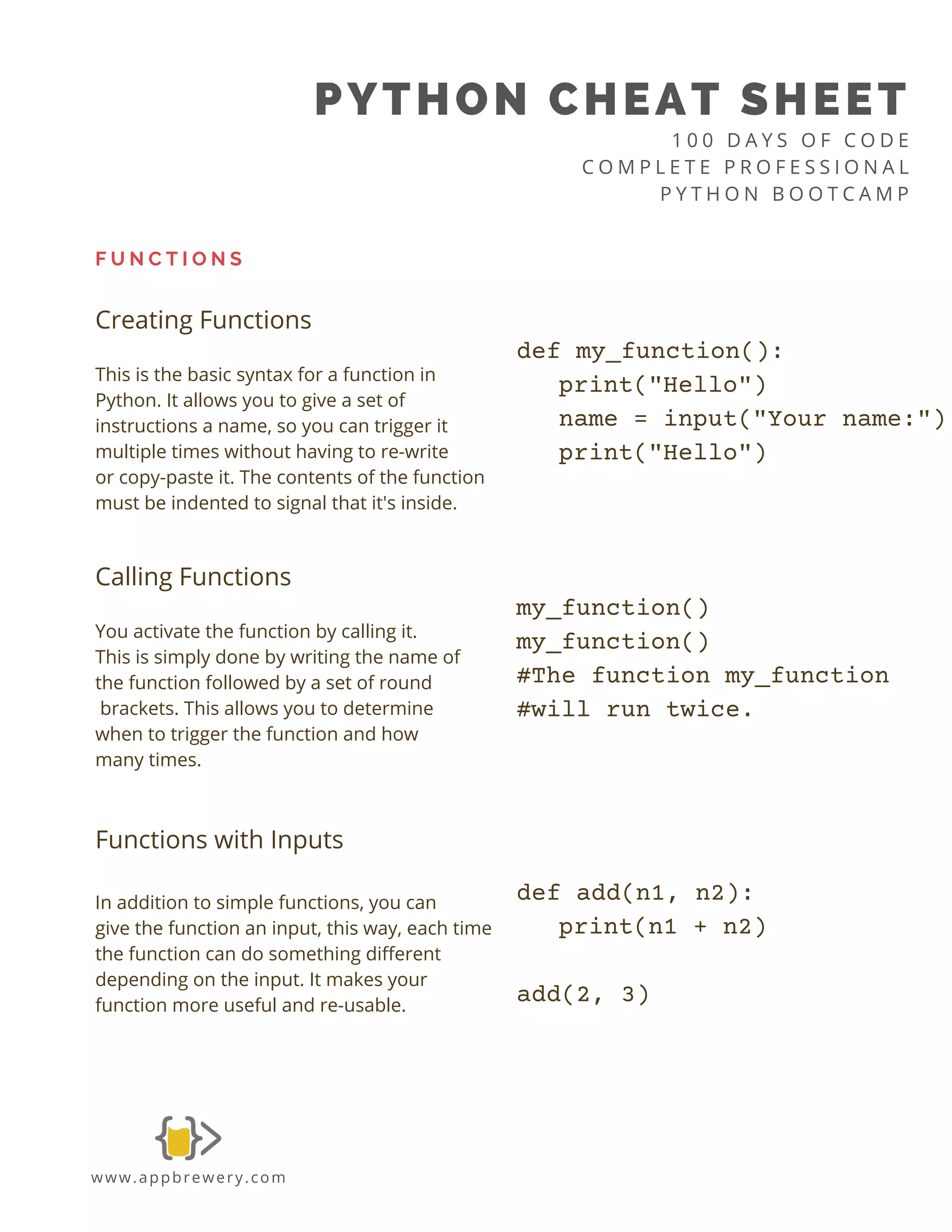

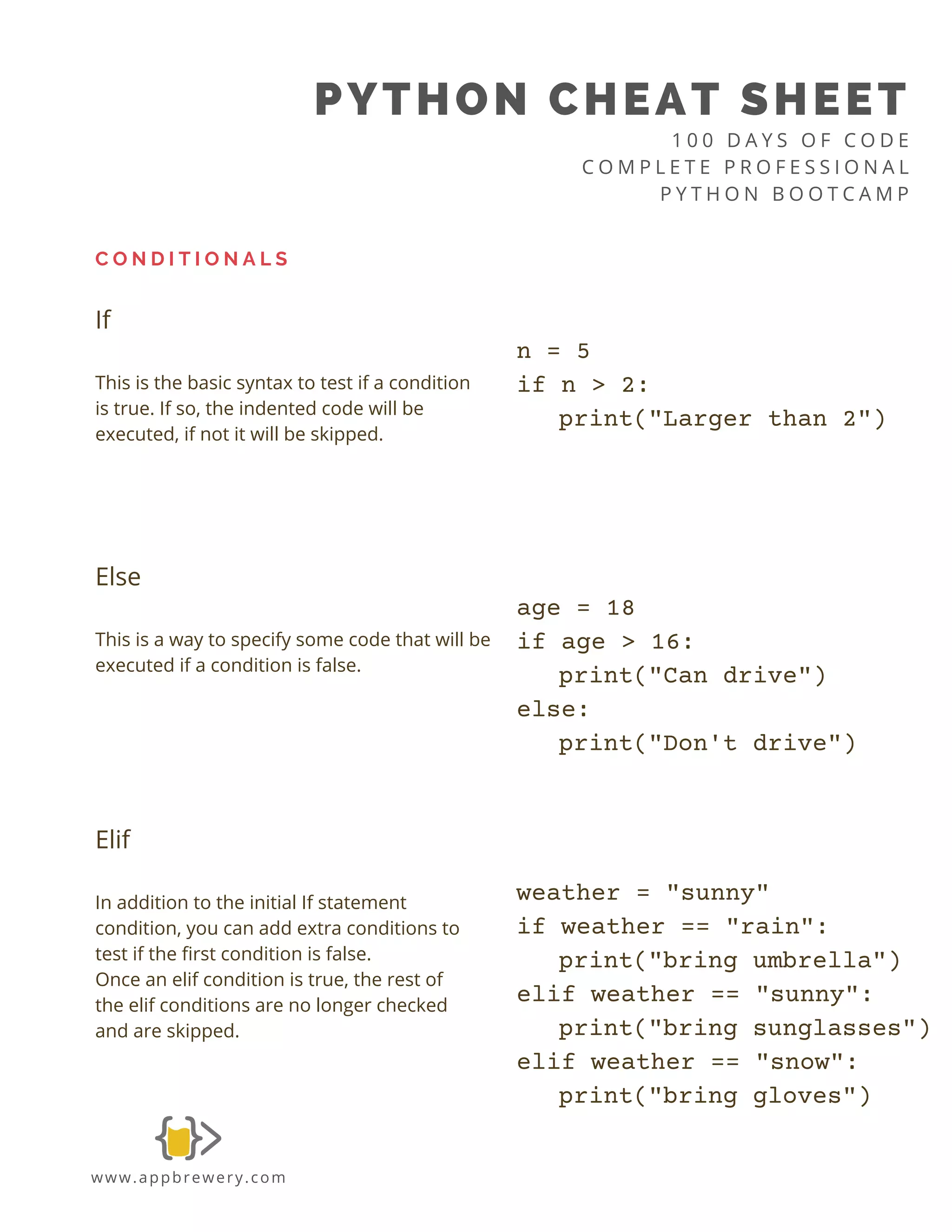

![PYTHON CHEAT SHEET
1 0 0 D A Y S O F C O D E
C O M P L E T E P R O F E S S I O N A L
P Y T H O N B O O T C A M P
www.appbrewery.com
_ in a For Loop
If the value your for loop is iterating through,
e.g. the number in the range, or the item in
the list is not needed, you can replace it with
an underscore.
for _ in range(100):
#Do something 100 times.
L O O P S
While Loop
This is a loop that will keep repeating itself
until the while condition becomes false.
n = 1
while n < 100:
n += 1
For Loop
For loops give you more control than
while loops. You can loop through anything
that is iterable. e.g. a range, a list, a dictionary
or tuple.
all_fruits = ["apple",
"banana", "orange"]
for fruit in all_fruits:
print(fruit)
break
This keyword allows you to break free of the
loop. You can use it in a for or while loop.
scores = [34, 67, 99, 105]
for s in scores:
if s > 100:
print("Invalid")
break
print(s)](https://image.slidesharecdn.com/pythonsyntaxcheatsheetbooklet-230821234344-65eb754d/75/Python-Syntax-Cheat-Sheet-Booklet-pdf-10-2048.jpg)
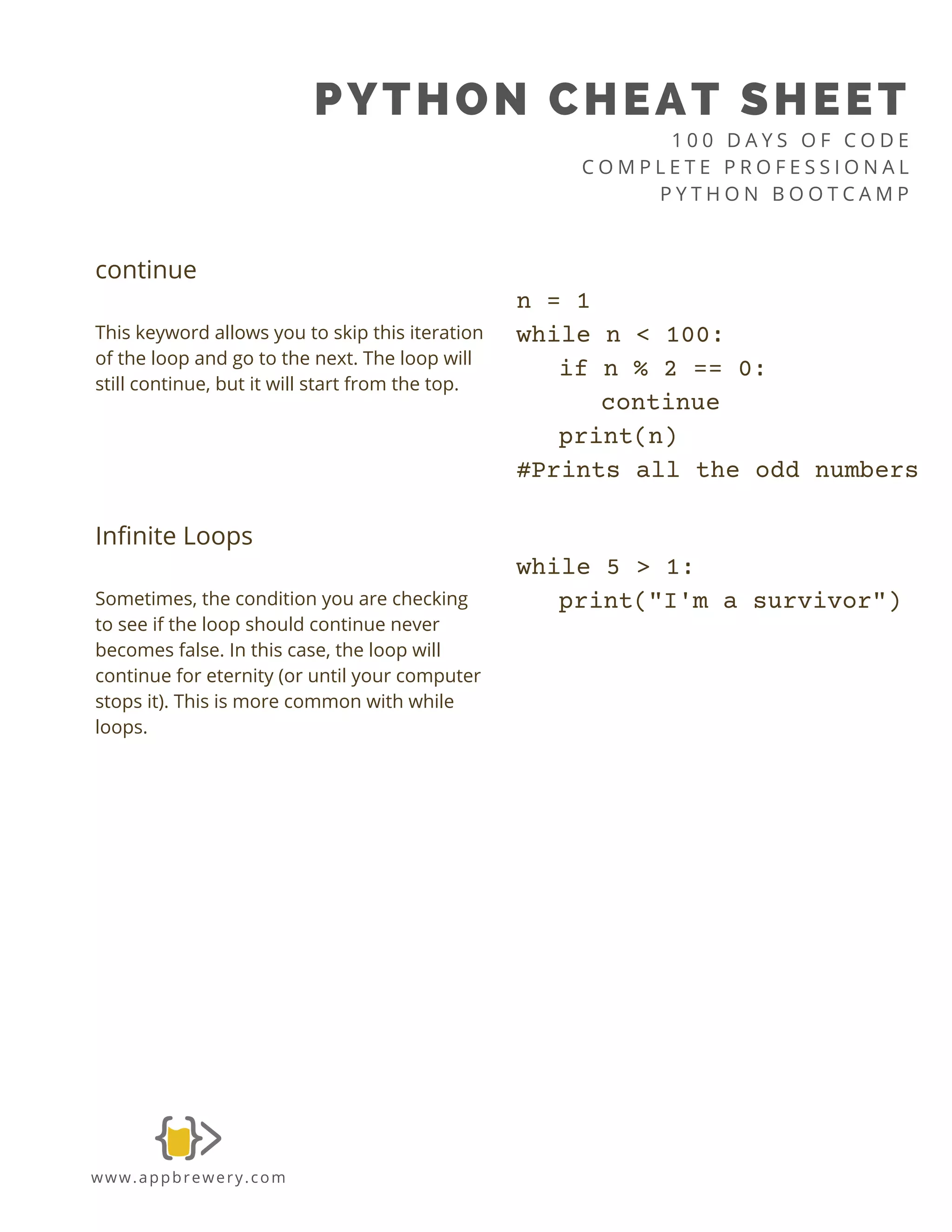
![PYTHON CHEAT SHEET
1 0 0 D A Y S O F C O D E
C O M P L E T E P R O F E S S I O N A L
P Y T H O N B O O T C A M P
www.appbrewery.com
List Index
To get hold of a particular item from a
list you can use its index number.
This number can also be negative, if you
want to start counting from the end of the
list.
letters = ["a", "b", "c"]
letters[0]
#Result:"a"
letters[-1]
#Result: "c"
L I S T M E T H O D S
Adding Lists Together
You can extend a list with another list by
using the extend keyword, or the + symbol.
list1 = [1, 2, 3]
list2 = [9, 8, 7]
new_list = list1 + list2
list1 += list2
Adding an Item to a List
If you just want to add a single item to a
list, you need to use the .append() method.
all_fruits = ["apple",
"banana", "orange"]
all_fruits.append("pear")
List Slicing
Using the list index and the colon symbol
you can slice up a list to get only the
portion you want.
Start is included, but end is not.
#list[start:end]
letters = ["a","b","c","d"]
letters[1:3]
#Result: ["b", "c"]](https://image.slidesharecdn.com/pythonsyntaxcheatsheetbooklet-230821234344-65eb754d/75/Python-Syntax-Cheat-Sheet-Booklet-pdf-12-2048.jpg)
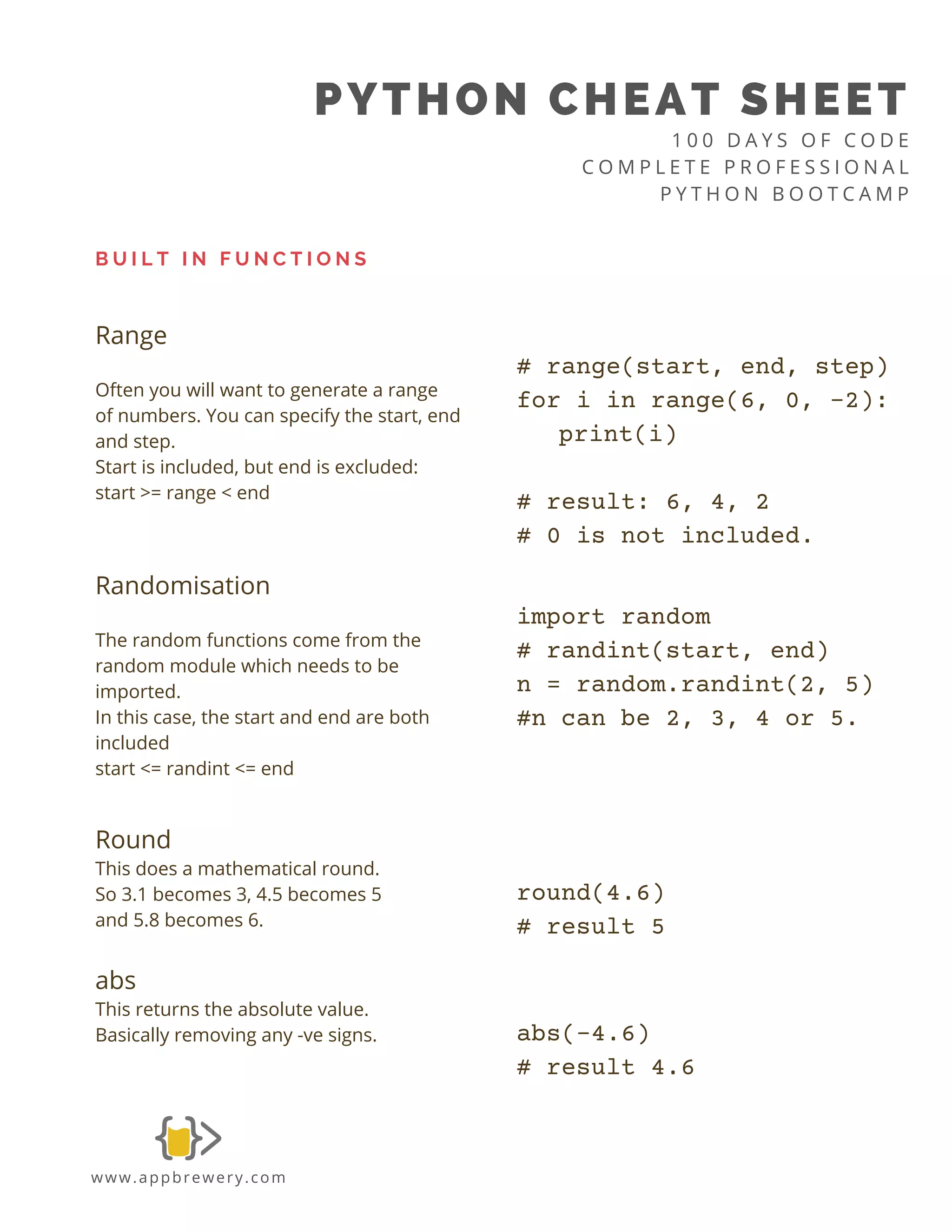
![PYTHON CHEAT SHEET
1 0 0 D A Y S O F C O D E
C O M P L E T E P R O F E S S I O N A L
P Y T H O N B O O T C A M P
www.appbrewery.com
M O D U L E S
Aliasing
You can use the as keyword to give
your module a different name.
import random as r
n = r.randint(1, 5)
Importing
Some modules are pre-installed with python
e.g. random/datetime
Other modules need to be installed from
pypi.org
import random
n = random.randint(3, 10)
Importing Everything
You can use the wildcard (*) to import
everything from a module. Beware, this
usually reduces code readability.
from random import *
list = [1, 2, 3]
choice(list)
# More readable/understood
#random.choice(list)
Importing from modules
You can import a specific thing from a
module. e.g. a function/class/constant
You do this with the from keyword.
It can save you from having to type the same
thing many times.
from random import randint
n = randint(1, 5)](https://image.slidesharecdn.com/pythonsyntaxcheatsheetbooklet-230821234344-65eb754d/75/Python-Syntax-Cheat-Sheet-Booklet-pdf-14-2048.jpg)

